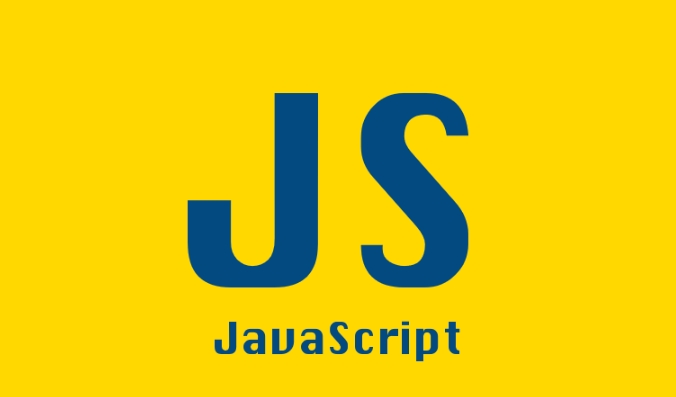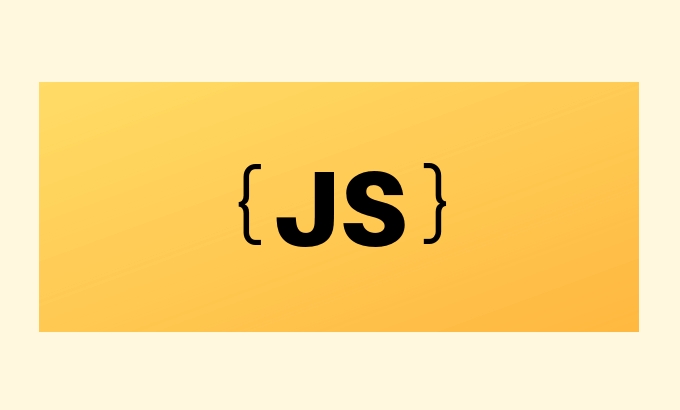Visual Regression Testing is a test method that detects unexpected changes in the UI through screenshot comparison. It works for page layout sensitive, component library, and multi-browser compatible projects, but not for dynamic content or prototype phase pages. Common tools include Percy, Cypress cypress-image-snapshot, and BackstopJS. The implementation steps are: install plug-ins, configure snapshots, generate benchmark diagrams, automatically compare and report error differences. Notes include a unified environment to avoid font rendering differences, dealing with animation influences, adjusting color accuracy thresholds, and regularly updating benchmarks to suit UI evolution.

In front-end development, UI changes are inevitable, but unexpected visual changes are often headaches. Visual Regression Testing is used to capture these "accidentally correct" problems . It is not a substitute for functional testing, but a complement, especially suitable for projects that focus on visual consistency.

What is Visual Regression Testing?
Simply put, it is to check whether the UI has undergone unexpected changes through screenshot comparison . For example, if you change a CSS, the button becomes crooked. This problem that is visible to the naked eye is difficult to detect with traditional unit tests, but visual tests can be identified immediately.
Common practices are:

- Take screenshots of key pages or components
- Compare the new screenshot with the benchmark
- If the difference exceeds the set threshold, it is marked as failed
This process can be automated and integrated into CI/CD, ensuring that each commit does not "silently" destroy the UI.
How to start using visual regression testing?
If you are building a UI with JavaScript, such as React, Vue, or Angular, there are several tools you can easily get started.

Commonly used solutions include:
- Percy : Provides cloud services, is easy to integrate, and supports mainstream frameworks and testing tools (such as Cypress, Playwright)
- Cypress cypress-image-snapshot : run locally, free, suitable for small and medium-sized projects
- BackstopJS : Independent tool, flexible configuration, suitable for teams who need customized processes
Take Cypress and cypress-image-snapshot as an example:
- Install the plugin and configure the snapshot options
- Add screenshot command to the test script
- Generate benchmark diagrams during the first run
- Automatic comparison is made after subsequent operation, and errors will be reported when the difference is found
Remember to set the resolution and viewport size in the CI environment, otherwise the screenshots may be inconsistent.
Which scenes are suitable for visual testing?
Not all UIs are worth testing, please choose the key points:
? Projects with sensitive changes in page-level layout, such as official websites, marketing pages ? Component library, especially basic components in the design system (buttons, input boxes, etc.)
? Products with high compatibility requirements for multi-browser
? Pages with more dynamic content (such as dashboards), or frequently changed prototype stage pages are not suitable
It is recommended to start with core components and key user paths and gradually expand them.
Some small details that are easy to ignore
- Font rendering differences : Font display may be different under different operating systems, especially Mac and Linux. It can be solved by Docker or unified environment.
- Animation and transition effects : Animation effects make screenshots unstable, and can be disabled or frozen during testing
- Color accuracy problem : Some tools tolerate certain color difference by default. If it is too loose, it may miss the problem. If it is too strict, it is easy to misrepresent. You have to adjust a suitable threshold.
Also, don't forget to update the benchmark chart regularly. The UI is constantly evolving. Change it when it is time to change the graph, otherwise the test will become the guardian of the "error baseline".
Basically that's it. Visual regression testing is not complicated, but it can help you keep the bottom line of the UI and allow you to refactor and iterate more with peace of mind.
The above is the detailed content of Visual Regression Testing for JavaScript UIs. For more information, please follow other related articles on the PHP Chinese website!

Hot AI Tools

Undress AI Tool
Undress images for free

Undresser.AI Undress
AI-powered app for creating realistic nude photos

AI Clothes Remover
Online AI tool for removing clothes from photos.

Clothoff.io
AI clothes remover

Video Face Swap
Swap faces in any video effortlessly with our completely free AI face swap tool!

Hot Article

Hot Tools

Notepad++7.3.1
Easy-to-use and free code editor

SublimeText3 Chinese version
Chinese version, very easy to use

Zend Studio 13.0.1
Powerful PHP integrated development environment

Dreamweaver CS6
Visual web development tools

SublimeText3 Mac version
God-level code editing software (SublimeText3)

Hot Topics
 How does garbage collection work in JavaScript?
Jul 04, 2025 am 12:42 AM
How does garbage collection work in JavaScript?
Jul 04, 2025 am 12:42 AM
JavaScript's garbage collection mechanism automatically manages memory through a tag-clearing algorithm to reduce the risk of memory leakage. The engine traverses and marks the active object from the root object, and unmarked is treated as garbage and cleared. For example, when the object is no longer referenced (such as setting the variable to null), it will be released in the next round of recycling. Common causes of memory leaks include: ① Uncleared timers or event listeners; ② References to external variables in closures; ③ Global variables continue to hold a large amount of data. The V8 engine optimizes recycling efficiency through strategies such as generational recycling, incremental marking, parallel/concurrent recycling, and reduces the main thread blocking time. During development, unnecessary global references should be avoided and object associations should be promptly decorated to improve performance and stability.
 How to make an HTTP request in Node.js?
Jul 13, 2025 am 02:18 AM
How to make an HTTP request in Node.js?
Jul 13, 2025 am 02:18 AM
There are three common ways to initiate HTTP requests in Node.js: use built-in modules, axios, and node-fetch. 1. Use the built-in http/https module without dependencies, which is suitable for basic scenarios, but requires manual processing of data stitching and error monitoring, such as using https.get() to obtain data or send POST requests through .write(); 2.axios is a third-party library based on Promise. It has concise syntax and powerful functions, supports async/await, automatic JSON conversion, interceptor, etc. It is recommended to simplify asynchronous request operations; 3.node-fetch provides a style similar to browser fetch, based on Promise and simple syntax
 JavaScript Data Types: Primitive vs Reference
Jul 13, 2025 am 02:43 AM
JavaScript Data Types: Primitive vs Reference
Jul 13, 2025 am 02:43 AM
JavaScript data types are divided into primitive types and reference types. Primitive types include string, number, boolean, null, undefined, and symbol. The values are immutable and copies are copied when assigning values, so they do not affect each other; reference types such as objects, arrays and functions store memory addresses, and variables pointing to the same object will affect each other. Typeof and instanceof can be used to determine types, but pay attention to the historical issues of typeofnull. Understanding these two types of differences can help write more stable and reliable code.
 JavaScript time object, someone builds an eactexe, faster website on Google Chrome, etc.
Jul 08, 2025 pm 02:27 PM
JavaScript time object, someone builds an eactexe, faster website on Google Chrome, etc.
Jul 08, 2025 pm 02:27 PM
Hello, JavaScript developers! Welcome to this week's JavaScript news! This week we will focus on: Oracle's trademark dispute with Deno, new JavaScript time objects are supported by browsers, Google Chrome updates, and some powerful developer tools. Let's get started! Oracle's trademark dispute with Deno Oracle's attempt to register a "JavaScript" trademark has caused controversy. Ryan Dahl, the creator of Node.js and Deno, has filed a petition to cancel the trademark, and he believes that JavaScript is an open standard and should not be used by Oracle
 React vs Angular vs Vue: which js framework is best?
Jul 05, 2025 am 02:24 AM
React vs Angular vs Vue: which js framework is best?
Jul 05, 2025 am 02:24 AM
Which JavaScript framework is the best choice? The answer is to choose the most suitable one according to your needs. 1.React is flexible and free, suitable for medium and large projects that require high customization and team architecture capabilities; 2. Angular provides complete solutions, suitable for enterprise-level applications and long-term maintenance; 3. Vue is easy to use, suitable for small and medium-sized projects or rapid development. In addition, whether there is an existing technology stack, team size, project life cycle and whether SSR is needed are also important factors in choosing a framework. In short, there is no absolutely the best framework, the best choice is the one that suits your needs.
 Understanding Immediately Invoked Function Expressions (IIFE) in JavaScript
Jul 04, 2025 am 02:42 AM
Understanding Immediately Invoked Function Expressions (IIFE) in JavaScript
Jul 04, 2025 am 02:42 AM
IIFE (ImmediatelyInvokedFunctionExpression) is a function expression executed immediately after definition, used to isolate variables and avoid contaminating global scope. It is called by wrapping the function in parentheses to make it an expression and a pair of brackets immediately followed by it, such as (function(){/code/})();. Its core uses include: 1. Avoid variable conflicts and prevent duplication of naming between multiple scripts; 2. Create a private scope to make the internal variables invisible; 3. Modular code to facilitate initialization without exposing too many variables. Common writing methods include versions passed with parameters and versions of ES6 arrow function, but note that expressions and ties must be used.
 Handling Promises: Chaining, Error Handling, and Promise Combinators in JavaScript
Jul 08, 2025 am 02:40 AM
Handling Promises: Chaining, Error Handling, and Promise Combinators in JavaScript
Jul 08, 2025 am 02:40 AM
Promise is the core mechanism for handling asynchronous operations in JavaScript. Understanding chain calls, error handling and combiners is the key to mastering their applications. 1. The chain call returns a new Promise through .then() to realize asynchronous process concatenation. Each .then() receives the previous result and can return a value or a Promise; 2. Error handling should use .catch() to catch exceptions to avoid silent failures, and can return the default value in catch to continue the process; 3. Combinators such as Promise.all() (successfully successful only after all success), Promise.race() (the first completion is returned) and Promise.allSettled() (waiting for all completions)
 What is the cache API and how is it used with Service Workers?
Jul 08, 2025 am 02:43 AM
What is the cache API and how is it used with Service Workers?
Jul 08, 2025 am 02:43 AM
CacheAPI is a tool provided by the browser to cache network requests, which is often used in conjunction with ServiceWorker to improve website performance and offline experience. 1. It allows developers to manually store resources such as scripts, style sheets, pictures, etc.; 2. It can match cache responses according to requests; 3. It supports deleting specific caches or clearing the entire cache; 4. It can implement cache priority or network priority strategies through ServiceWorker listening to fetch events; 5. It is often used for offline support, speed up repeated access speed, preloading key resources and background update content; 6. When using it, you need to pay attention to cache version control, storage restrictions and the difference from HTTP caching mechanism.






